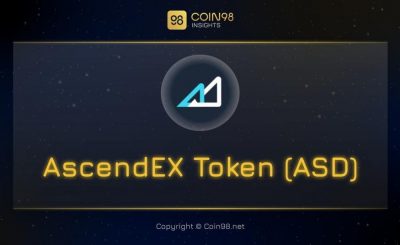In this article, I will summarize a little bit about the overall situation of Algorithmic Stablecoins and a little bit of my thoughts on the future of Algorithmic Stablecoins.
What is Algorithmic Stablecoin?
Algorithmic Stablecoin can be understood as a type of Stablecoin with mechanisms to help balance the price at a specific price (usually 1 $), the commonly used method is to use an algorithm to adjust the supply of Tokens in the market to thereby affecting supply – demand and indirectly pushing the Token price to the price entered by Peg (usually 1$).
More simply, Algorithmic Stablecoin can be understood as a stablecoin with stability based on supply and demand (Supply – Demand) mechanism thanks to the use of algorithms.
You can read more Defi Lego series for a more complete view of Stablecoins.
Classify
Currently, there are 3 types of Algorithmic Stablecoins as follows:
- Rebase Model: Algorithmic Stablecoin using Rebase Model usually has only 1 Token and it will use an algorithm to adjust the Token supply, the pioneer project is Ampleforth (AMPL).
- Seignorage Model: Algorithmic Stablecoins using the Seigniorage Model have more than 1 token, usually 2 or 3 Tokens. The first token is pegged to a specific price (usually $1), the rest of the tokens will have different strategies to increase or decrease the supply as the price of the first token rises or falls away from the peg price (usually $1 ).
- Fractional-reserve Model: The typical project is Frax Finance. In the Frax protocol, there are two active tokens, FRAX (stablecoin) and FXS (Frax Shares). This model achieves balance through collateralization, allowing it to periodically change the collateral ratio to see how many FRAXs can be algorithmically stabilized, and how many of them. need collateral support.
Efficiency
Overall, we can see that the Stablecoins under Rebase Model, Seignorage Model have not really good performance. Most of them are priced below the Peg price for a long time despite the measures to equalize prices.
Frax is a stablecoin that has a pretty good performance when it comes to relative stability to DAI but even so, they still have points to overcome when DAI itself still has points to overcome.
Current Algorithmic Stablecoin Issues
Some of the problems that Algorithmic Stablecoins are facing:
- Basically, the Uniswap curve is not suitable for Stablecoins, they are easily negatively affected when there is a lot of selling pressure, which makes Stablecoins like DAI also have a lot of Peg deviation at times.
- Most Algorithmic Stablecoin models assume that users will immediately take advantage of arbitrage opportunities to make profits, but because Farming has an APY of up to 4-5 figures, users often leave them as LPs. in Uniswap to continue farming.
- In addition, most Algorithmic Stablecoins do not have clear uses or they just stop at the Whitepaper, it is impossible for you to build a protocol and then by default users will come and use your product.
Current solution
To increase buying demand for Stablecoins below the peg price, we have the following solutions, which have been and are being implemented by leading projects in the Algorithmic Stablecoin array:
- Accepts Collateral partial reserve protocol (Crypto Assets, USDC, USDT,…). This will help the balancing mechanism work better.
- Convert to Fractional-reserve Model.
- Design new Vault Farming to create Buy Demand pushing Token price up peg.
The Future of Algorithmic Stablecoins
As I said above, it’s impossible for you to build a protocol and then by default users will come and use your product. On the contrary, you need to do many things to motivate users to use your product.
Similar to Algorithmic Stablecoin projects in general, most of them are Base Protocols, and the promises only stop at the Concept level or on the Whitepaper.
To achieve that, projects will need to do a lot more before the concepts on paper become reality.
After stable operation, other Dapps or Protocols can be built on it to create more sustainable usage demand.
Example: The case of Synthetix and dHEDGE.
Dapp dHEDGE is a Portfolio Management, users who want to participate in investing on dHEDGE are required to have sUSD from Synthetix.
Similarly, it is entirely possible that another “Synthetix and dHEDGE” that builds on the Base Protocol, those same “Synthetix and dHEDGE” will increase demand for more sustainable use of Algorithmic Stablecoins.
summary
Personally, I think we are just in the early stages of the Algorithmic Stablecoin. In the future, when Base Protocols can fulfill their promises, there will be many Dapps and Protocols built on it.
I believe that outstanding projects in this segment can bring extremely high returns to investors (x100 – x1,000 times) in the future from this point on.
Disclaimer: All information contained in this article is intended to provide readers with the latest information in the market and should not be considered investment advice. Crypto investment is a very risky form of investment, readers need to learn carefully before investing and should only participate with capital that can be lost.
Source: The Future of Algorithmic Stablecoins
– TechtipsnReview






